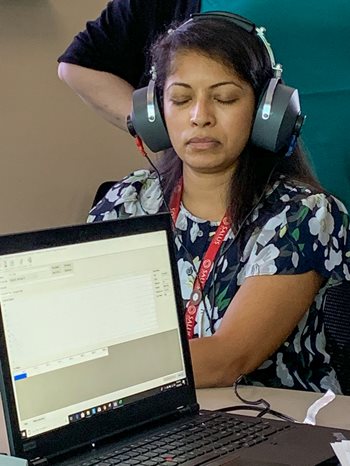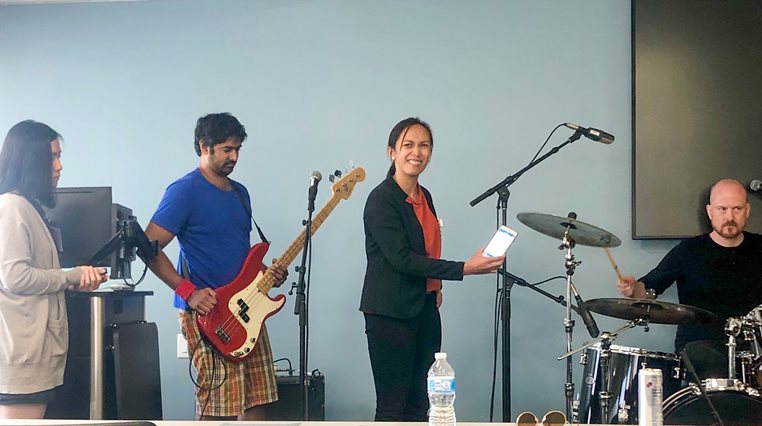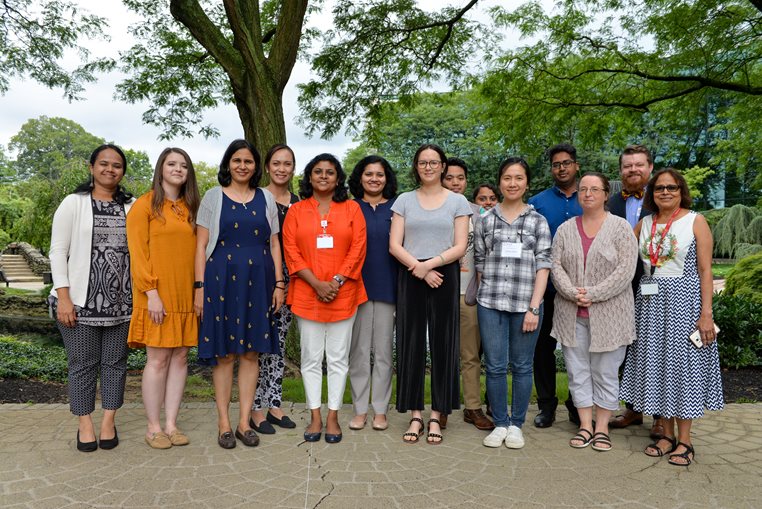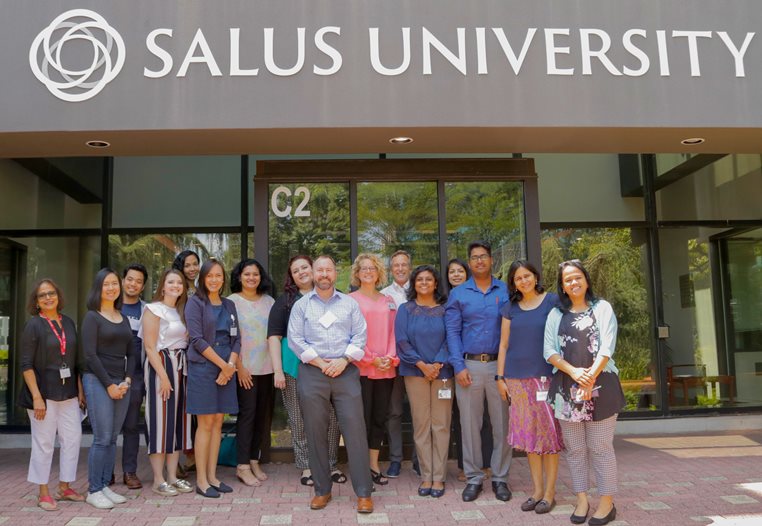 Dr. Jenny Rajan played the piano and violin from elementary school through high school. But during those formative years, she never received hearing loss prevention education nor was she taught about about noise- and music-induced hearing loss.
Dr. Jenny Rajan played the piano and violin from elementary school through high school. But during those formative years, she never received hearing loss prevention education nor was she taught about about noise- and music-induced hearing loss.
That training came later in her career and continues to this day.
Thanks to this year’s Summer Workshops in the University’s Osborne College of Audiology (OCA), Dr. Rajan and other participants were able to attend two sessions of four days each on the topics “Hearing Conservation in Music and Industry” and “Hearing Assessment in Young Children: Objective Tests and Cochlear Implants.”
“When working with musicians, not only do we want to know how loud their music is, but also what the exposure time was,” said Dr. Rajan, CCC-A, FAAA, OCA assistant professor. “Some of the effects of music-induced hearing loss include temporary or permanent loss of frequency resolution, tinnitus, hypersensitivity, distortion, and diplacusis."
The goal of the workshops is to provide an update on current science in the specific topic of study of the workshop, review clinical implications and provide hands-on training using the tools and techniques discussed in order to improve clinical practice. Designed for current audiology practitioners/educators/clinicians, the workshops are intended to have an immediate impact on the participants’ clinical service delivery.
In the “Hearing Conservation in Music and Industry” workshop, students were taught about noise control, hearing conservation, industrial audiology, and occupational audiology. The course was designed to provide a foundation in the prevention, diagnosis, and treatment of music-induced hearing disorders and general management of musicians with hearing loss and/or tinnitus.

“I’m trying to teach people all the ins and outs related to how noise damages hearing and how, within industry as well as outside industry, we protect workers’ hearing from the perspective of regulations through best practices,” said Dr. Brian Fligor, ScD, of Tobias and Battite Hearing Wellness Centers in Boston.
Dr. Fligor said very few people who go to concerts use hearing protection devices because they assume it will lessen their experience with the music. “If the sound levels are sufficient to cause ringing in your ears, that means you have overdosed your ears,” he said. “Just turning the volume down some would be the desired outcome.”
One of the highlights of the workshop, according to Dr. Rajan, was when the participants gained hands-on experience measuring noise and hearing protection device attenuation by using in-ear monitors during a live band performance.

“Each of us had sound level meters, while wearing hearing protection of course, and measured how loud the music got with a drummer, two guitarists, and vocals,” she said. “Some of us recorded levels as high as 118 dBA, which according to the Occupational Safety and Health Administration (OSHA), the maximum permissible time at that level of sound is only 15 minutes before damaging your ears.”
The other summer workshop, titled “Hearing Assessment in Infants and Young Children: Objective Tests and Cochlear Implants (CI),” covered the basic mechanics and physiology of auditory detection and transduction at the level of the cochlea as well as aspects of the central auditory nervous system. Participants learned about the protocols and considerations for measuring otoacoustic emissions and auditory evoked responses and about the details of cochlear implant sound processing, cochlear electrode stimulation of neurons and other electrophysiological CI issues.
“My goal is to give the students a basic sense of how to program cochlear implants and feel more comfortable with them,” said Dr. Joshua Sevier, coordinator of the Cochlear Implant Program at the University of Nebraska. “That way they can incorporate the measures that we’re doing and the programming methods into their own practices once they get back home.”
That was particularly helpful for workshop participant Raakhee Kamat, of Mumbai, India.
“Given that I’ve been in implants for a very long time, such hands-on experience in the kinds of topics that we’ve done has helped me refresh some of the things I’d done a while ago,” she said. “It’s good to know the theory, but when you have the practical aspects and the hands-on, all of that helps because of the kinds of limitations we might have back home. I’m seeing how things can be applied back home, given that we may not always have the best, but within what is available and what is applicable.”
Affan Ghiyas, also from India, said he learned a lot of new things in the workshop, but it was the hands-on practical experience that he enjoyed and benefitted from the most.
“If I already know something about, say psychoacoustics. It’s the most complicated subject ever, in my opinion. It’s more physics and sounds,” he said. “If I have already practiced that – which I have used in my practice to an extent – now I’m going back and studying it again. It makes it clearer to move forward on how I can understand and apply it. That’s a really cool way of studying.”
Ghiyas said attending the workshops provided a better learning experience for the participants as opposed to taking a course online.
“You are putting things into practice, under supervision,” he said. “You can always clarify your doubts. When you do it online, of course, there are discussions and answers, but that’s online. Here, you have a person to help you throughout the course.”

Dr. Rajan came out of the music workshop refreshed and motivated.
“It inspired my passion to participate in outreach activities to reach the youngest musicians and children in our community,” she said. “As an audiologist, I have the responsibility to create awareness and knowledge about noise- and music-induced hearing loss as well as promote hearing protection use.”